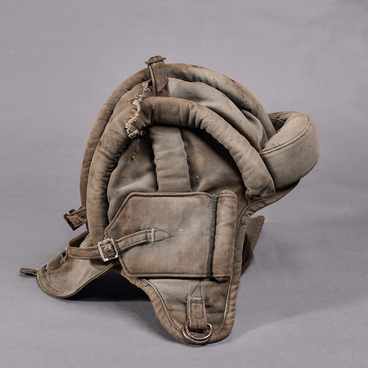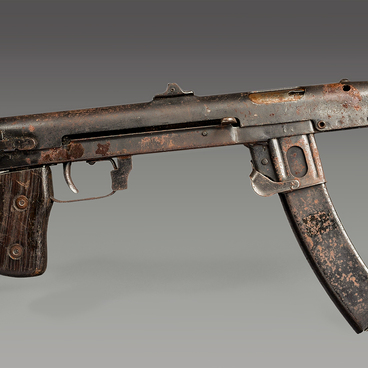During the summer, the soldiers of the Red Army wore ankle boots and boots and in winter — valenki (traditional Russian winter footwear). In cold weather, high-level force commanding staff wore winter boots or burki (felt high boots). However, due to the lack of fabrics and footwear, as well as the fact, that soldiers could not always get supply on time, officers were the first to get boots and many military personnel had to wear captured or civilian footwear.
The boots showed at the exhibition belonged to Ivan Shtin, a veteran of the Great Patriotic War. He was born in 1907 in the village of Nema in Nemsky District of the Vyatka Governorate. In 1941, Shtin volunteered for the front and fought as part of the Northwestern, Kalinin, Southwestern, Voronezh, Stalingrad, 2nd and 1st Ukrainian Fronts. He was awarded two Orders of the Red Army, the Order of the Great Patriotic War 1st class, two Orders of the Great Patriotic War 2nd class, medals ‘For the Defense of Stalingrad’, ‘For the Liberation of Prague’ and ‘For the Victory over Germany in the Great Patriotic War 1941-1945’.
The extract from Shtin’s awarded list dated August 22, 1944 says:
The boots showed at the exhibition belonged to Ivan Shtin, a veteran of the Great Patriotic War. He was born in 1907 in the village of Nema in Nemsky District of the Vyatka Governorate. In 1941, Shtin volunteered for the front and fought as part of the Northwestern, Kalinin, Southwestern, Voronezh, Stalingrad, 2nd and 1st Ukrainian Fronts. He was awarded two Orders of the Red Army, the Order of the Great Patriotic War 1st class, two Orders of the Great Patriotic War 2nd class, medals ‘For the Defense of Stalingrad’, ‘For the Liberation of Prague’ and ‘For the Victory over Germany in the Great Patriotic War 1941-1945’.
The extract from Shtin’s awarded list dated August 22, 1944 says:

